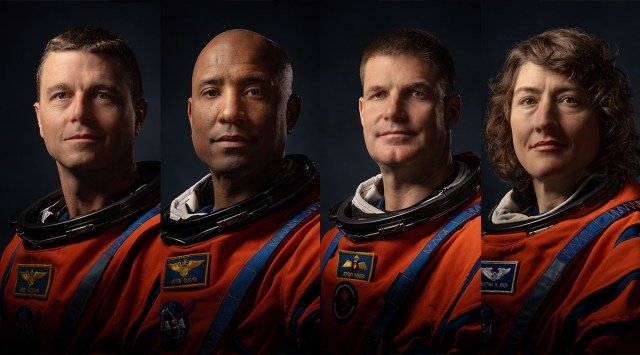Artemis 2: Meet the 4 astronauts NASA selected for the first crewed moon mission since Apollo
NASA announced the four Artemis 2 astronauts—Reid Wiseman, Victor Glover, Jeremy Hansen and Christina Koch. Here is what you need to know about them.
 NASA Artemis 2 crew: (L-R): Mission commander Reid Wiseman, pilot Victor Glover, CSA's Jeremy Hansen and mission specialist Christina Koch. (Image credit: NASA)
NASA Artemis 2 crew: (L-R): Mission commander Reid Wiseman, pilot Victor Glover, CSA's Jeremy Hansen and mission specialist Christina Koch. (Image credit: NASA) NASA has announced the four astronauts that will go to the lunar orbit and come back with the Artemis 2 mission—mission commander Reid Wiseman, Victor Glover, Canadian Space Agency astronaut Jeremy Hansen and NASA mission specialist Christina Koch.
“We are going,” said NASA administrator and former astronaut Bill Nelson as he began his address during the space agency’s announcement of the four astronauts. The event was live-streamed on NASA’s website on Monday.
“We will unlock new knowledge and understanding. We have always dreamed about what more is ahead. Why? Because it is in our DNA. It is part of us. It is who we are, as adventurers, as explorers, as frontiers people,” added Nelson.
Who are these Artemis 2 astronauts?
 Artemis 2 mission commander Reid Wiseman. (Image credit: NASA)
Artemis 2 mission commander Reid Wiseman. (Image credit: NASA)
NASA’s Reid Wiseman will be the commander of the Artemis 2 mission. Wiseman previously lived and worked on the International Space Station in 2014. Before that, he commanded the undersea research mission NEEMO21, a 16-day underwater mission that simulated space exploration. He also served as chief of NASA’s astronauts in the past.
 Artemis 2 pilot Victor Glover. (Image credit: NASA)
Artemis 2 pilot Victor Glover. (Image credit: NASA)
Victor Glover will serve as the pilot for Artemis 2, navigating Orion around the Moon. Glover was previously the pilot of NASA’s SpaceX Crew-1 mission. According to the space agency, he has logged over 3,000 flight hours in more than 40 different aircraft.
 CSA astronaut Jeremy Hansen. (Image credit: NASA)
CSA astronaut Jeremy Hansen. (Image credit: NASA)
Jeremy Hansen will represent the Canadian Space Agency during the mission, and he was a fighter pilot before joining the space agency. He has worked with NASA on astronaut training and mission operations, but this will be his first mission in space.
 Artemis 2 mission specialist Christina Koch. (Image credit: NASA)
Artemis 2 mission specialist Christina Koch. (Image credit: NASA)
NASA astronaut Christina Koch will be the mission specialist for Artemis 3. Koch visited the space station in 2019, where she was part of the first all-woman spacewalk in history. She began her career as an electrical engineer at NASA’s Goddard Space Flight Center.
What will happen during the Artemis 2 mission?
The Artemis 1 mission allowed NASA to test the foundations of its latest human space exploration capabilities. This included the Space Launch System (SLS) rocket, Orion spacecraft, and all associated ground systems. Artemis 2 will be the first crewed mission to test all this.
The 10-day-long mission will have the four astronauts flying around the Moon to test Orion and its life-support missions to ensure that it can provide a safe habitat that will allow astronauts to live and work during deep space missions.
The initial launch will be similar to what happened during the Artemis 1 mission. After that, the Orion spacecraft and the SLS’s upper stage (ICPS or the interim cryogenic propulsion stage) will orbit Earth twice. They do this to ensure that all of Orion’s systems are working fine while it is still close to our planet.
After this, the Orion spacecraft will travel to about 10,300 kilometres past the far side of the Moon. From this vantage point, the astronauts will be able to see both the Moon in the foreground and the Earth in the distant background.
Then, Orion will take advantage of the Earth-Moon gravity field to bring itself back to our planet without any propulsion at all. This is possible because the spacecraft is taking a “lunar free return trajectory.”







